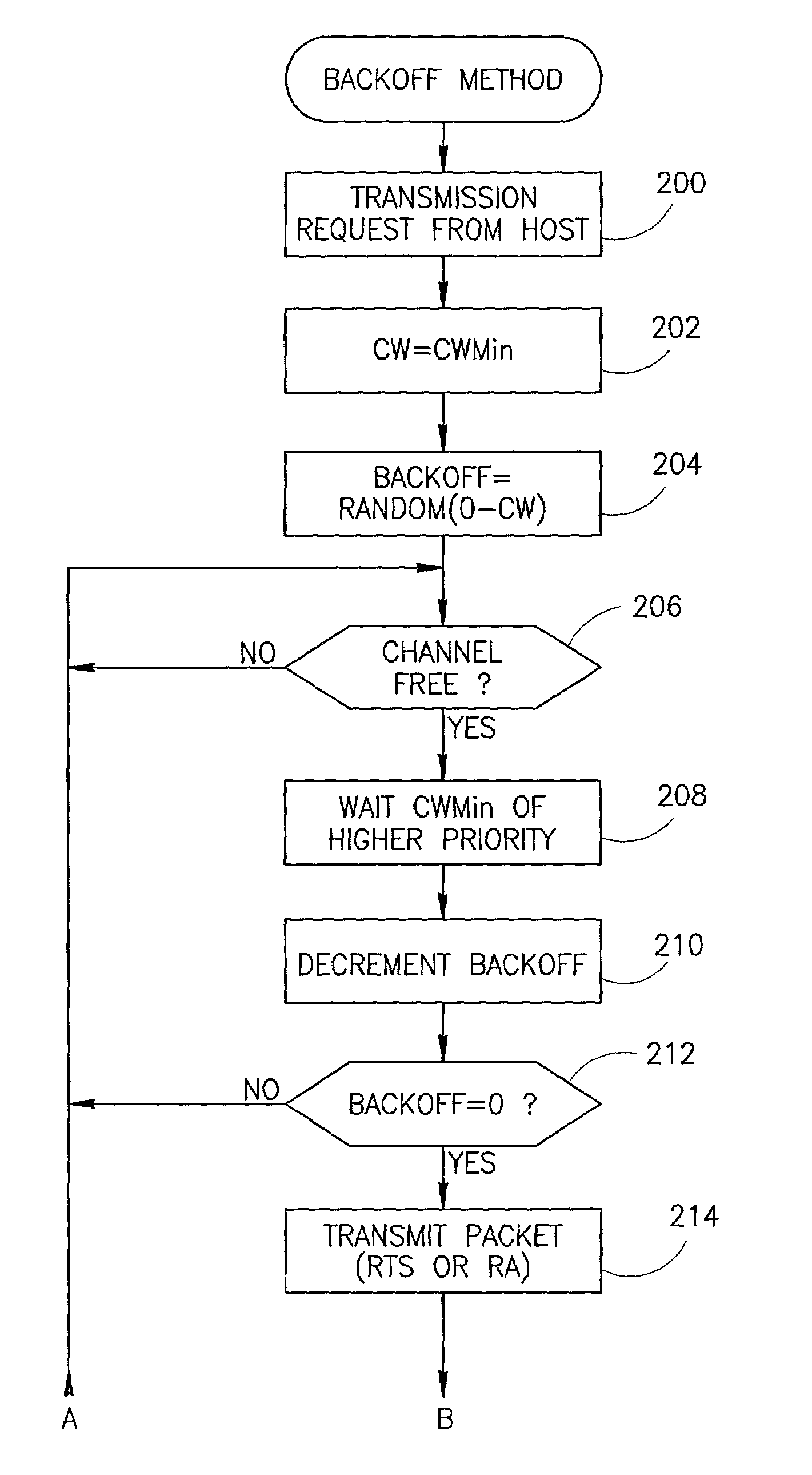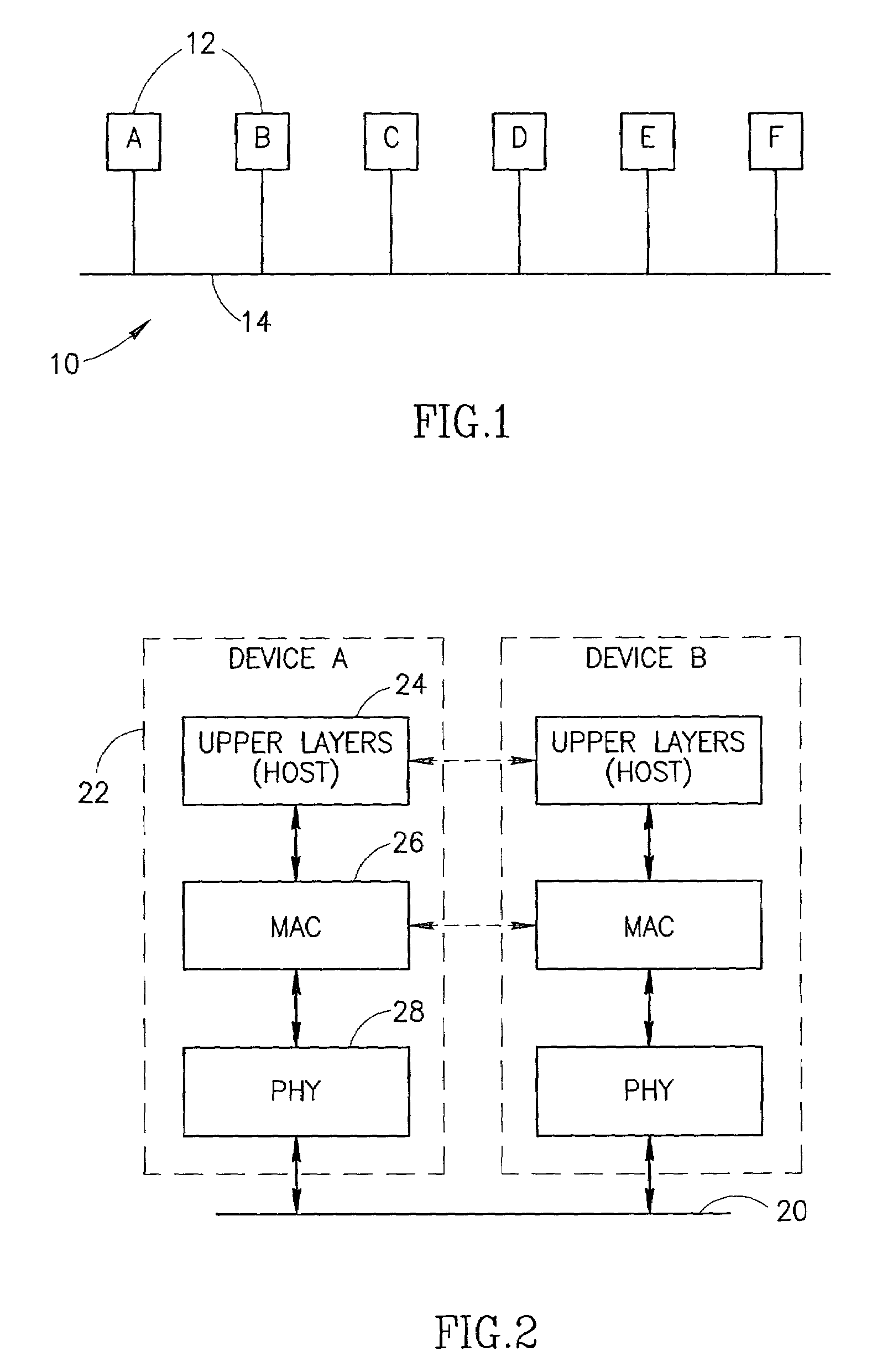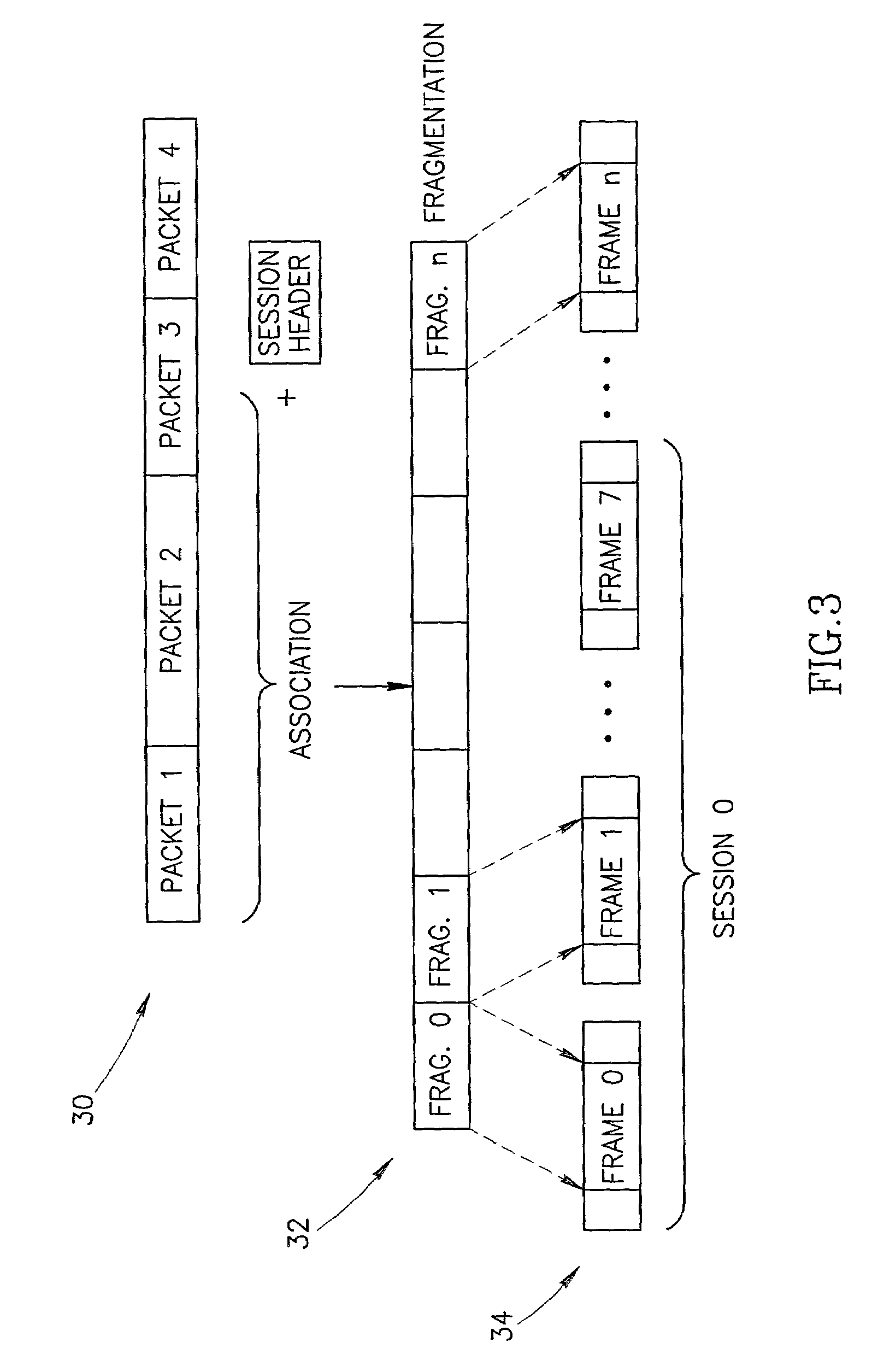Channel access method for powerline carrier based media access control protocol
a technology of powerline carrier and access control protocol, applied in the field of data communication systems, can solve the problems of large labor and material expense, inability to communicate freely, and inability to install optical fiber cables, and achieve the effect of efficient and reliable packet transport and effective channel access mechanism
- Summary
- Abstract
- Description
- Claims
- Application Information
AI Technical Summary
Benefits of technology
Problems solved by technology
Method used
Image
Examples
Embodiment Construction
Notation and Definitions
[0094]The following notation and definitions apply throughout this document.
[0095]
TermDefinitionACKAcknowledgeACK_TimeACK transmit timeAck_TimeoutThe time until an ACK packet is receivedARQAddress RequestASICApplication Specific Integrated CircuitBackoffCurrent value of the backoffBackoff_SlotTimeThe time it takes to detect CDBIDID number of broadcast messageBID_LengthBroadcast ID lengthBLABroadcast Link AddressCDCarrier DetectCIFSContention Interframe SpaceCPUCentral Processing UnitCQChannel QualityCRCCyclic Redundancy CheckCSCarrier SenseCSMA / CDCarrier Sense Multiple Access with Collision DetectionCSMA / CACarrier Sense Multiple Access with Collision AvoidanceCSRChannel Sounding RequestCTConditional TransmissionCTSClear to SendCTS_TimeCTS transmit timeCTS_Time_MeasTransmission time of CTS frame measured by the receiverCTS_timeoutThe time until an CTS packet is receivedCWThe current backoff range valueCWMaxThe maximal value of backoff rangeCWMinThe minimal val...
PUM
 Login to View More
Login to View More Abstract
Description
Claims
Application Information
 Login to View More
Login to View More - R&D
- Intellectual Property
- Life Sciences
- Materials
- Tech Scout
- Unparalleled Data Quality
- Higher Quality Content
- 60% Fewer Hallucinations
Browse by: Latest US Patents, China's latest patents, Technical Efficacy Thesaurus, Application Domain, Technology Topic, Popular Technical Reports.
© 2025 PatSnap. All rights reserved.Legal|Privacy policy|Modern Slavery Act Transparency Statement|Sitemap|About US| Contact US: help@patsnap.com



